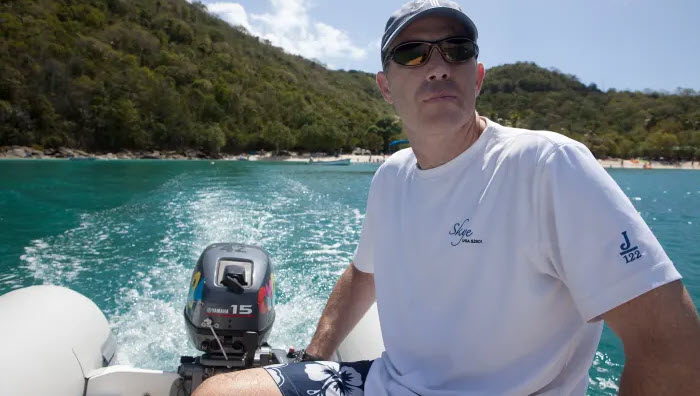
Published on April 10th, 2022
by Andy Schell, SAIL magazine
Dropped your dinghy’s outboard motor overboard? No need to panic. First, get the motor out of the drink quickly and rinse it thoroughly with fresh water; most importantly, do not let it dry. Once the water begins to evaporate, corrosion will set in and can cause permanent damage, especially if the motor was submerged in saltwater.
Remove the spark plugs, fuel lines and carburetor, liberally applying WD-40 as you go to drive out the water (“WD,” after all, stands for “Water Displacement”). Spray inside the cylinders or, better still, rinse the chambers with methylated spirits. Remember, water is the enemy. After removing the carburetor, carefully wipe it clean and douse it with WD-40.
Hand-crank the engine while it’s disassembled—this will physically force out all the water left in the cylinders. With no spark plugs or compression, this is surprisingly easy, so don’t snap the pull cord. When it feels sufficiently purged, crank it some more. Install new spark plugs and reassemble the rest of the motor. Double the oil mixture in some fresh fuel and cross your fingers for the moment of truth: if it fires, let it run for at least 20 minutes.
No luck? Disassemble everything, repeat the water-removal process and leave the parts and motor out to dry in the warm sun for a while (don’t put anything in the oven, as is sometimes suggested). After a few hours, re-assemble and try to start the motor again. Even if the outboard does come back to life, get it to a professional (especially if it’s a newer four-stroke model) for a more thorough servicing.
For additional tips, click here.

